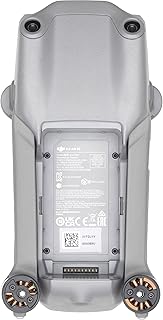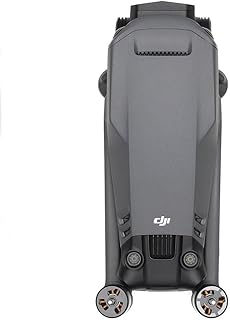The Rise of the RotorLogic Drone: A Market Analysis
This analysis explores the potential market success of RotorLogic drones, a hypothetical brand. It's crucial to understand the existing drone market, competitive landscape, and potential customer segments to assess RotorLogic's prospects.
1. Existing Drone Market:
* Rapid Growth: The global drone market is expanding rapidly, driven by increasing demand across various sectors, including commercial, military, and recreational.
* Dominated by Consumer Drones: Currently, consumer drones dominate the market share, with DJI holding a significant market share.
* Emerging Applications: Emerging applications like aerial photography, surveillance, delivery, and inspection are driving growth in the commercial and industrial sectors.
2. RotorLogic's Positioning:
* Target Market: To define RotorLogic's target market, we need to understand its unique selling propositions (USPs) and competitive advantages.
* Product Differentiation: What makes RotorLogic drones stand out? Is it superior technology, advanced features, affordability, or a specific niche focus?
* Value Proposition: What value does RotorLogic offer to its target customers? Is it user-friendliness, reliability, advanced features, or cost-effectiveness?
3. Competitive Landscape:
* Key Players: Identify the major players in RotorLogic's target market and their strengths and weaknesses.
* Competitive Advantages: Analyze RotorLogic's competitive advantages against these players. Are they innovative technology, pricing strategy, customer service, brand image, or distribution network?
* Barriers to Entry: Understand the barriers to entry in the market. Are there regulatory hurdles, intellectual property rights, or high capital requirements?
4. Market Segmentation:
* Customer Needs: Identify distinct customer segments within RotorLogic's target market based on their specific needs and preferences. This could include hobbyists, professional photographers, farmers, construction companies, or delivery services.
* Pricing and Distribution: Develop a pricing strategy and distribution channels that align with the needs of each customer segment.
5. Marketing and Sales Strategy:
* Brand Building: Create a strong brand identity that resonates with RotorLogic's target customers.
* Marketing Channels: Leverage appropriate marketing channels to reach the target audience, including online advertising, social media, content marketing, and partnerships.
* Sales Strategy: Develop a sales strategy to convert leads into customers, focusing on building strong customer relationships.
6. SWOT Analysis:
* Strengths: Identify RotorLogic's internal strengths, such as technological innovation, experienced team, or strong brand reputation.
* Weaknesses: Identify potential weaknesses, such as limited production capacity, lack of brand awareness, or limited marketing budget.
* Opportunities: Identify external opportunities, such as emerging markets, government regulations, or technological advancements.
* Threats: Identify potential threats, such as increased competition, economic downturn, or changes in consumer preferences.
7. Financial Projections:
* Revenue Growth: Project RotorLogic's revenue growth based on market size, market share, and pricing strategy.
* Profitability: Analyze RotorLogic's profitability based on cost structure, operating expenses, and pricing.
* Investment Needs: Determine the financial resources needed to achieve RotorLogic's goals.
Conclusion:
This analysis provides a framework for understanding the market opportunities and challenges for RotorLogic drones. By carefully analyzing its competitive landscape, target market, and value proposition, RotorLogic can develop a robust business strategy for achieving success in the rapidly growing drone market.
Note: This is a general framework, and the specific details will need to be tailored based on RotorLogic's unique features, target market, and competitive landscape.


